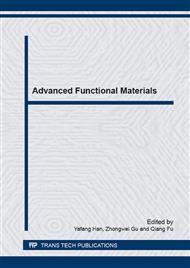p.233
p.241
p.248
p.254
p.263
p.268
p.276
p.281
p.287
Characterization of Hot Deformation Behavior of TC18 Titanium Alloy
Abstract:
In this work, hot compression tests on columniform TC18 titanium alloy specimens were performed with a Gleeble® 3500 thermal and mechanical simulator in the temperature range of 820-875 °C and at constant strain rates of 0.01, 0.1 and 1 s−1. Relationship model of true stress versus true strain as well as peak stress versus deformation temperature were established, and microstructural micrographs of TC18 titanium alloy were analyzed. The results showed that the flow stress decreased as the deformation temperature increased or the strain rate decreased. Besides, the deformation resistance at temperature above Tβ (β transus temperature) was obviously lower than that at below Tβ. In addition, flow stresses kept almost constant when it deformed in β region where hot deformation mechanism is DRV, but significant flow softening occurred in α+β region, where deformation mechanism is mainly dominated by DRX. And in α+β region, DRX is prone to occur at a low strain rate, and it is difficult for DRX to occur at high strain rate.
Info:
Periodical:
Pages:
263-267
Citation:
Online since:
March 2015
Authors:
Price:
Сopyright:
© 2015 Trans Tech Publications Ltd. All Rights Reserved
Share:
Citation:


